The shortest distance between two points is a straight line — and that goes double when you’re on a ferry that traverses its course in a matter of minutes…or seconds.
Balboa Island Ferry
900 feet, 3 minutes
Balboa, California
Video by Bill Newcott
As I watch the guy collecting $1.50 fares from walk-on passengers on the Balboa Island Ferry (cars cost $2.50), I realize his biggest challenge will be getting around to everyone before we reach the other side.
It’s a busy afternoon in late fall, and surfers and beachgoers are beginning to depart from the gently curving Balboa Peninsula. As we float toward Balboa Island, a water-bound village in the middle of Balboa Bay, the Southern California sun glares blindingly off the choppy waters.
Behind me on the peninsula turns a gaily colored Ferris wheel, which is not so much receding into the distance as taking a few baby steps back as I enjoy this mini-cruise to the opposite shore. Ahead lies Balboa Island, home to hundreds of quaint bungalows, a picturesque perimeter trail, and two frozen banana stands, each claiming to be the “original.”
Around us, electric boats, yachts, and speedboats dodge our ferry, the Admiral, as well as a sister ship, the Commodore, approaching in the opposite direction. Kids wave, horns toot, and the subdued roar of Admiral’s diesel engine grunts in response. Back on shore, the air was still, but here, for three refreshing minutes, a cool breeze washes across my face.
While it’s among North America’s shortest ferry routes, the Balboa Ferry — owned by the same family since 1919 — is also one of the busiest: A full-time skipper will cover 3,200 miles and dock some 22,500 times in a single year.
But even that volume of business may not save the ferry.
“The ferry is in trouble,” laments a local woman named Christina, who happens to live in one of those island bungalows. We are sitting at the elaborate bar of the Balboa Beach Bay Resort, standing at the same spot where the likes of John Wayne, Clark Gable, and Lucy and Desi have rested their elbows since 1947.
It seems the well-intentioned California state legislature has passed a law requiring all ferries to reach “zero emission” levels by 2026. That means the Balboa Island Ferry would need to convert to electric power — a pricey proposition. The owners estimate it would cost $5 million.
“That $1.50 a head just ain’t gonna cut it,” says Christina. “Do you know how much gas that ferry saves people? It’s an eight-mile drive around the peninsula.
“Besides,” she adds, looking through the large windows to the waterway beyond, “I love that ferry.”
And that seems as good a reason as any to keep it.
Billy Bishop Toronto Airport Ferry
430 feet, 90 seconds
Toronto, Ontario, Canada
Video by Bill Newcott
Hands down, the best thing about flying in or out of Toronto is the boat ride.
You’ll not find a big-city airport that’s more convenient than Billy Bishop (also known as Toronto Island Airport); commercial passengers on final approach can almost see into the windows of downtown. But from the first flight in 1939, airport users have had to traverse a narrow boat channel between the airport and the mainland.
That’s where the ferry has always come in — a quick glide between terminals on a boat that carries both people and vehicles. Standing on the south side deck, look up and you’ll see the glass towers of Toronto, including the 1,800-foot-high CN Tower, pierce the blue Lake Ontario sky. Look down and you may spot some long-necked loons plying the channel in search of their next fish dinner.
A few years ago, Toronto dug a tunnel under the channel, giving passengers the option of reaching the airport on a moving walkway. Happily, there are always seafaring faithful who are still up for the shortest Great Lakes cruise.
Local Motion Island Line Bike Ferry
200 feet, 90 seconds
South Hero, Vermont
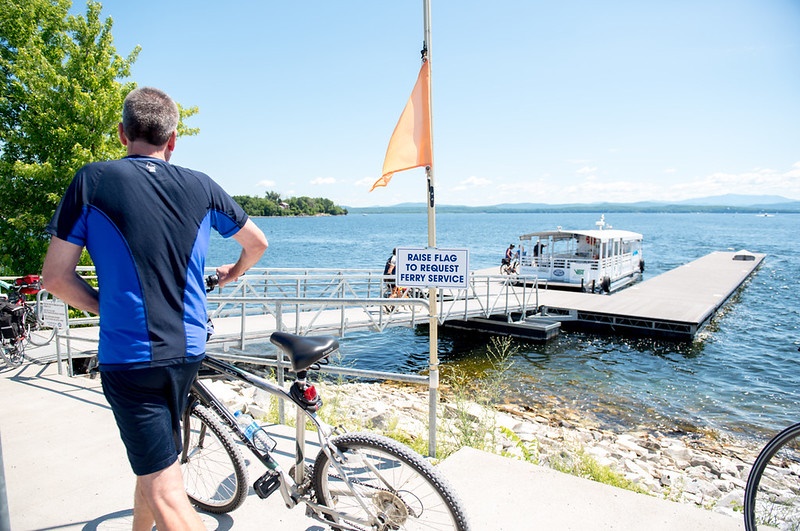
Some people insist this brief boat hop across a gap in a century-old railroad causeway is the world’s shortest bicycle ferry route, and the operators, who shuttle some 16,000 passengers and their wheels a year, aren’t about to argue with them.
The gap comes near the north end of the Colchester Causeway —a three-mile path that once carried trains from Rutland, Vermont to Montreal, Canada. The route enables bicyclists to slash 15 busy street miles from the trip between Burlington, Vermont and the Lake Champlain Islands, but there’s one catch: Where a railroad swing bridge once spanned the gap, there’s now just empty air.
That’s where the ferry comes in. For just a few dollars, the skipper of the Bill and Carole Hauke II will rev up the engine — and almost immediately rev it down again as the opposite dock approaches.
Along the way, see if you can catch a glimpse of black-coated minks darting among the causeway rocks.
Governors Island Ferry
3,000 feet, 7 minutes
New York City
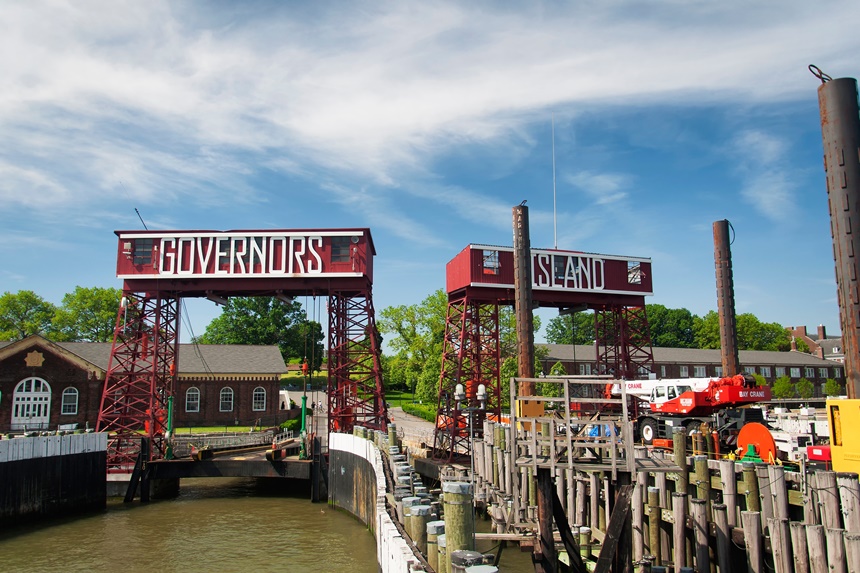
A few feet away, the iconic orange-and-black behemoths of New York’s Staten Island Ferry push off from lower Manhattan heading for Staten Island across what amounts to five miles of open sea.
Few visitors pause to admire the ferry’s next-door neighbor: a squat, century-old terminal, its ruffled exterior of rolled zinc, copper, rolled steel, and cast iron, inspired by the architecture of the 1889 Paris World’s Fair. Even fewer step inside to board a small ferry that will chug them across a narrow channel to one of New York City’s true hidden gems, Governors Island.
No cars are allowed on the Lt. Samuel S. Coursen, which has been plying these waters since 1967 (a new all-electric ferry is now being built). But on weekends the craft bristles with bicycles for use on the island’s looping, crisscrossing paved paths. The ride offers unsurpassed views of lower Manhattan, the Brooklyn Bridge to the east, and New York Harbor — and the Statue of Liberty — to the west.
Among New York’s most historic patches of land, it was on this island that the Dutch first colonized the area, and where for thousands of years prior to that, Indigenous people hunted and fished. The U.S. military occupied the place for a century, leaving behind forts, housing (now some of the city’s most sought-after rentals), and untold numbers of live cannonballs, some of which are still being dug up.
The St. John’s River (Mayport) Ferry
0.9 miles, 5 minutes
Jacksonville, Florida
Video by Bill Newcott
Despite the palm trees swaying on both banks of the mile-wide St. John’s River, I could swear that bearded, big-bellied fellow collecting tolls from drivers waiting to roll aboard is Santa Claus.
He’s not, of course (which becomes abundantly clear as he flirts with my sister-in-law Jackie, who’s driving). But the bobbing, wind-swept mini-cruise aboard the ferry Jean Ribault is a midwinter gift, nevertheless — wrapped up in a swirl of gulls, brown pelicans, and fishing boats that frequent this quiet corner of Jacksonville.
We are near the mouth of the St. Johns River, one of the few major North American courses that runs south to north. On the near bank is the naval station at Mayport; ahead rises Fort George Island, occupied from prehistoric times by the Timucua people, who left behind enormous shell mounds.
It’s well worth a visit, although a lot of folks here are just passing through as the ferry is a critical link in the 3,000-mile East Coast Greenway, stretching from Maine to Florida.
The Delta Ferries
J-Mack: 400 feet, 3 minutes
Real McCoy II: 750 feet, 90 seconds
Sacramento Delta, California
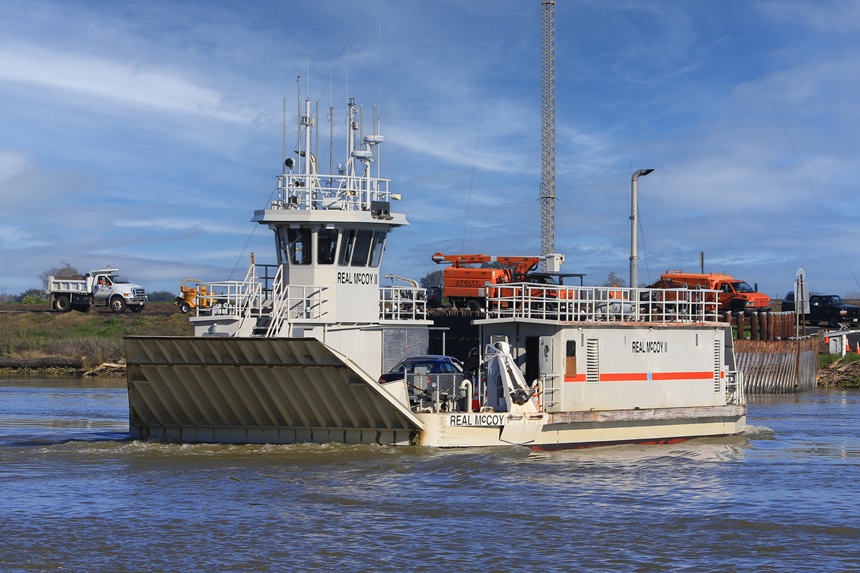
The winding rivers and tributaries of the Sacramento River Delta can provide some real challenges to locals who just want to get from point A to point B: The roads meander as much as the waterways do, easily turning a 10-miles-as-the-crow-flies trip into a 50-miles-as-the-snake-slithers odyssey.
That’s why the Delta ferries exist: Their tiny hops across narrow channels provide huge time savings.
Two ferries operate these days: The cable-pulled J-Mack, cranking its way across the fancifully named Steamboat Slough, and the free-floating Real McCoy II, crossing the Sacramento River near the town of Rio Vista.
These are decidedly working ferries — free of charge and pretty far from the nearest tourist areas. But if you’re traveling between San Francisco and Sacramento and you’ve got a few hours to burn, escape the interstate and experience these small slices of old California.
Be aware: While the original Real McCoy reliably made 200 trips a day for more than 60 years, the Real McCoy II has a notorious reputation for breaking down. You’d best check with Caltrans, which runs both ferries, for an update.
Woodland Ferry
480 feet, 2 ½ minutes
Seaford, Delaware
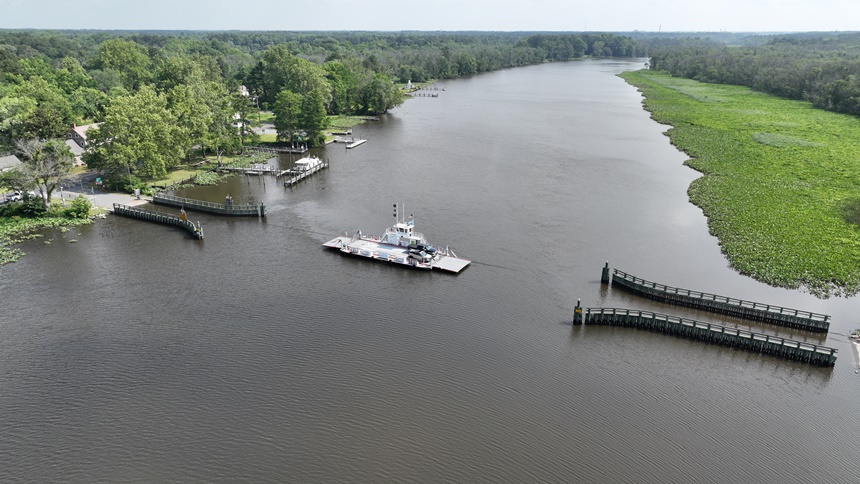
Besides being among North America’s shortest ferry routes, the crossing on Delaware’s narrow Nanticoke River is almost certainly the oldest; ferries have been bridging this watery gap since nearly 300 years ago, when an enterprising businessman started giving rides in a flat-bottomed scow.
So hated were the first licensed Nanticoke ferry operators — two brothers who made their fortunes foreclosing on their poorer neighbors’ properties — that when one of them was shot dead on the ferry dock in 1843, no one bothered to investigate the murder.
Things are a lot more calm these days: The ferry Tina Fallon, named for a beloved local schoolteacher, shuttles back and forth on an increasingly irregular schedule, due to a lack of qualified skippers. Still, it saves motorists a 30-minute drive between the towns of Seaford and Laurel, Maryland, and provides a pleasant surprise for Sunday drivers on day trips from Philadelphia, Baltimore, and Washington, D.C.
Become a Saturday Evening Post member and enjoy unlimited access. Subscribe now
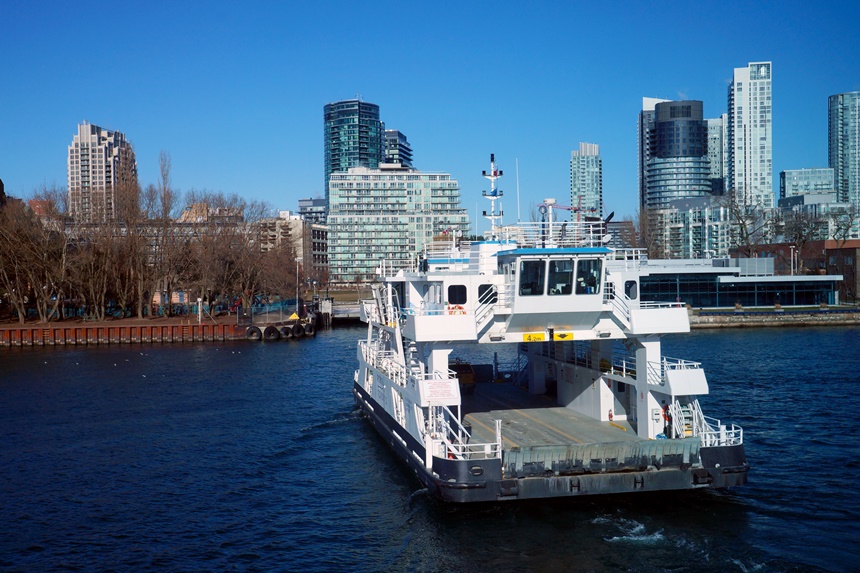
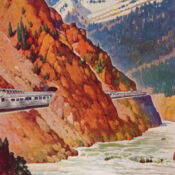

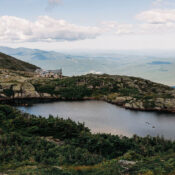
Comments
If we’re talking car ferries, by the way, Anderson Ferry across the Ohio river is probably 5-7 minutes…
Saugatuck, MI has (I think) the only remaining chain-operated ferry – shorter than many of these, unless this is only car ferries. Also, the ferry to the floating green at Coeur d’Alene in Idaho would be a fun addition.
Dear Editor:
You missed the Wolfe Island Ferry.
https://www.wolfeisland.com/ferry.php#wolfe
There are wonderful distilleries, wineries, cheese shops and yummie food all within a short distance of
the ferry service.
Just look up the websites for, Frontenac Tourism, Prince Edward County Tourism and others.
They are on Facebook and Twitter I am told.
This is year round, and, Christmas, like Canadian Thanksgiving are just as wonderful as the summemonths.
Not sure how you could have missed this.
Sincerely.
Gord Young -Peterborough ON
Canby Ferry in Oregon between Canby and Wilsonville crosses the Willamette River throughout the day. Very short ride but beautiful scenery and an alternative to the freeway.
The Woodland Ferry goes between Seaford and Laurel DELWARE.
It is one of my favorite rides.
While I found your article interesting and the fact that ferries are disappearing fast (at least in the South), you left out a vital free short ferry connecting Kentucky State Hwy 93 (I hope that number is right) across the Cumberland River near Tompkinsville which only spans about fifty feet. It’s a popular ride through the country and farms.
Thanks for the update, Jeff. As the article mentions, there are other ferries struggling with the shift to electric power. Congratulations on making it happen in Toronto, one of my favorite cities!
Thanks for the shout out for the Billy Bishop Toronto City Airport Ferry! It’s everything you say and more. One of the two ferries in use to the airport, the “Marilyn Bell 1” — is fully electric, entering service in December 15 2021 after having undergone a conversion from diesel power, and is 100% emissions-free!
The ferry returned to service following a 20-week retrofit, which saw its diesel generators and engines removed to make space for a zero-emission, lithium-ion power and propulsion system.